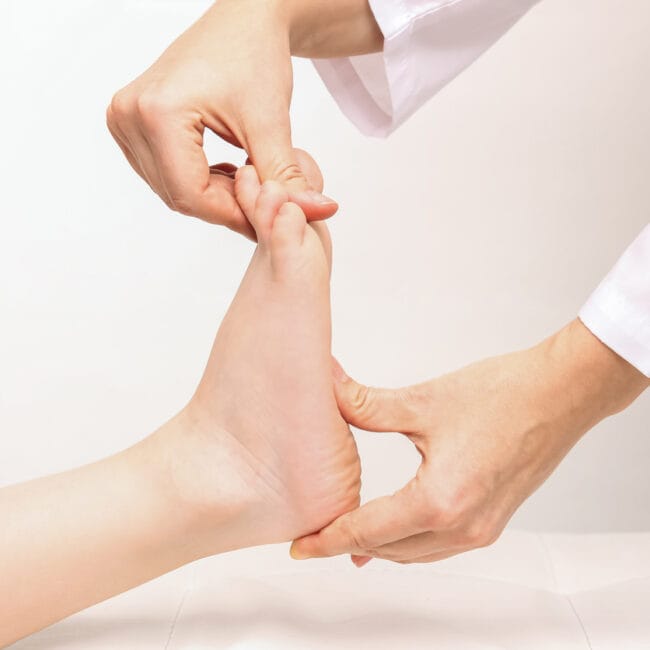I often hear that running is bad for your knees and will end up giving you arthritis. A study (Esculier et al, 2018) asked the general public (a mix of both runners and non-runners) what their thoughts were about this:
Regular running hurts the knee joint – 13.1% agreed (25.9% were uncertain)
Running frequently will lead to knee arthritis – 7.3% agreed (33.9% were uncertain)
Running marathons or longer distances will lead to knee arthritis – 15.5% agreed (43.6 uncertain)
Running with knee arthritis will cause greater knee joint damage – 17.9% agreed (48.4% uncertain)
Running with knee arthritis will accelerate the need for a knee replacement – 12.4% agreed (53.1% uncertain)
Interestingly, throughout all the questions, a much bigger percentage of non-runners thought running would do damage to knee joints compared to the actual runners! But as you can see from these results, there is a big percentage of people who are unsure if running is bad for the knees.
But What About All The Impact On My Knees? Does That Do Damage?
Kessler et al (2008) did a study on experienced marathon runners. They basically did MRI scans for each runner on both knees, got them to run 20km and then did two further MRI scans, one immediately after finishing the run and the other one hour after the run.
The MRI taken immediately after the 20km showed the volume of cartilage (a thin layer that covers bone – it provides shock absorption) in the patella (knee cap) and the top of tibia (shinbone) had decreased due to the impact of running.
BUT the MRI scan an hour later showed the volume had all but gone back to the pre-run level. So as the authors of the study conclude, “the cartilage is able to adapt well to loads caused by running and has the ability to recover changes due to repeated loading”. The human body is robust and resilient!
That Study Looked At Experienced Runners… What If I’m Just Starting Out?
Van Ginckel et al (2019) researched a group of new runners starting a gradual 10 week running programme compared to a group who continued their usual inactive lifestyle. Again they did scans of the knees before and after the 10 week period and they found the new runners had increased the volume of their cartilage, whereas for those who were sedentary, their cartilage volume either stayed the same or decreased.
This study shows that gradually building up your running over a period of weeks actually has a protective effect on your knee cartilage.
But Can I Do Too Much?
One review of the research (Alentorn-Geli et al, 2017) looked at 125,810 people over 25 separate studies to see what percentage of the general public had osteoarthritis in either the knee or the hip. For competitive or elite runners (those who were professional or represented their country), 13.1% of them had arthritis compared to 10.2% of those who led a largely sedentary life. But fascinatingly, for recreational runners, only 3.5% of them had arthritis.
So it appears you can do too much but only if you’re an elite level athlete. For the vast majority of us, the likes of you and me, running again appears to have a protective effect on our knees.
But What If I Have Pain In My Knees When I Run… Am I Doing Them Damage?
The short answer is likely to be… no. We know there is a poor link between pain and any structural damage. Some slight pain or discomfort when you run is perfectly acceptable, as long as:
The pain/discomfort settles down within 24 hours back to a level it was before you went on your run
There’s no increase in any swelling
You’re able to walk normally afterwards (no limping)
Slight pain is something I’d classify about 2 to 4 out of 10, on a scale where 0 is no pain and 10 is the worst pain ever. If you’re getting sharp pain, pushing up above 5 out of 10 when you’re running, again it’s not necessarily a sign you’re doing any damage but this is your body’s way of telling you that you’re doing a bit too much; it’s a protective response telling us to change or modify something.
This is where getting in touch with a Chartered Physiotherapist can help – we’ll be able to identify areas of flexibility and strength to improve on as well as develop ways to help manage any discomfort, from hands-on techniques to looking at how your footwear and running style may be contributing to your symptoms.
References
Kessler, M.A., Glaser, C., Tittel, S., Reiser, M. and Imhoff, A.B., 2008. Recovery of the menisci and articular cartilage of runners after cessation of exercise: additional aspects of in vivo investigation based on 3-dimensional magnetic resonance imaging. The American journal of sports medicine, 36(5), pp.966-970.
Esculier, J.F., Krowchuk, N.M., Li, L.C., Taunton, J.E. and Hunt, M.A., 2018. What are the perceptions about running and knee joint health among the public and healthcare practitioners in Canada?. PloS one, 13(10), p.e0204872.
Van Ginckel, A., Baelde, N., Almqvist, K.F., Roosen, P., McNair, P. and Witvrouw, E., 2010. Functional adaptation of knee cartilage in asymptomatic female novice runners compared to sedentary controls. A longitudinal analysis using delayed Gadolinium Enhanced Magnetic Resonance Imaging of Cartilage (dGEMRIC). Osteoarthritis and cartilage, 18(12), pp.1564-1569.
Alentorn-Geli, E., Samuelsson, K., Musahl, V., Green, C.L., Bhandari, M. and Karlsson, J., 2017. The association of recreational and competitive running with hip and knee osteoarthritis: a systematic review and meta-analysis. journal of orthopaedic & sports physical therapy, 47(6), pp.373-390.
Photo by Andrew Tanglao on Unsplash














